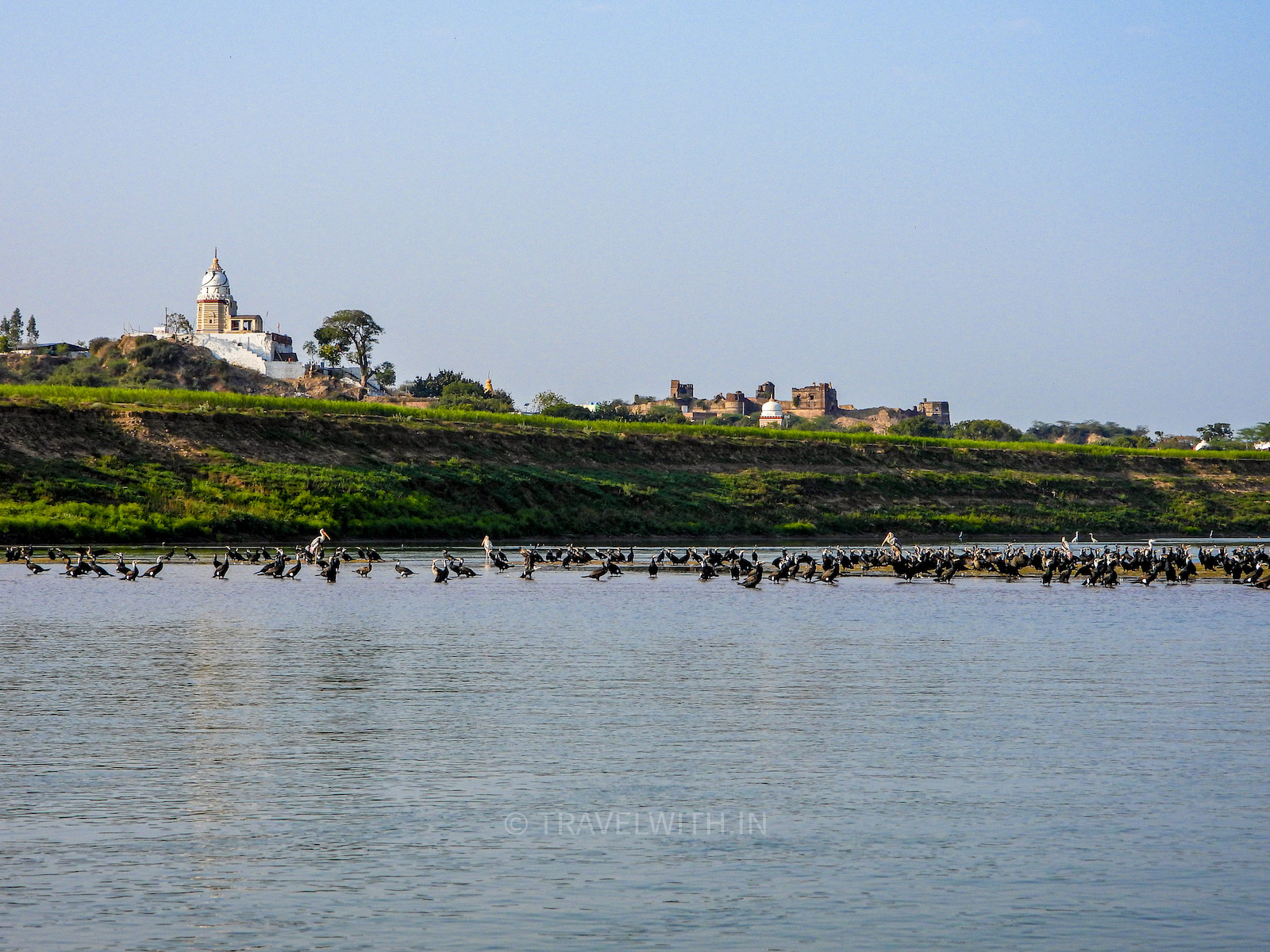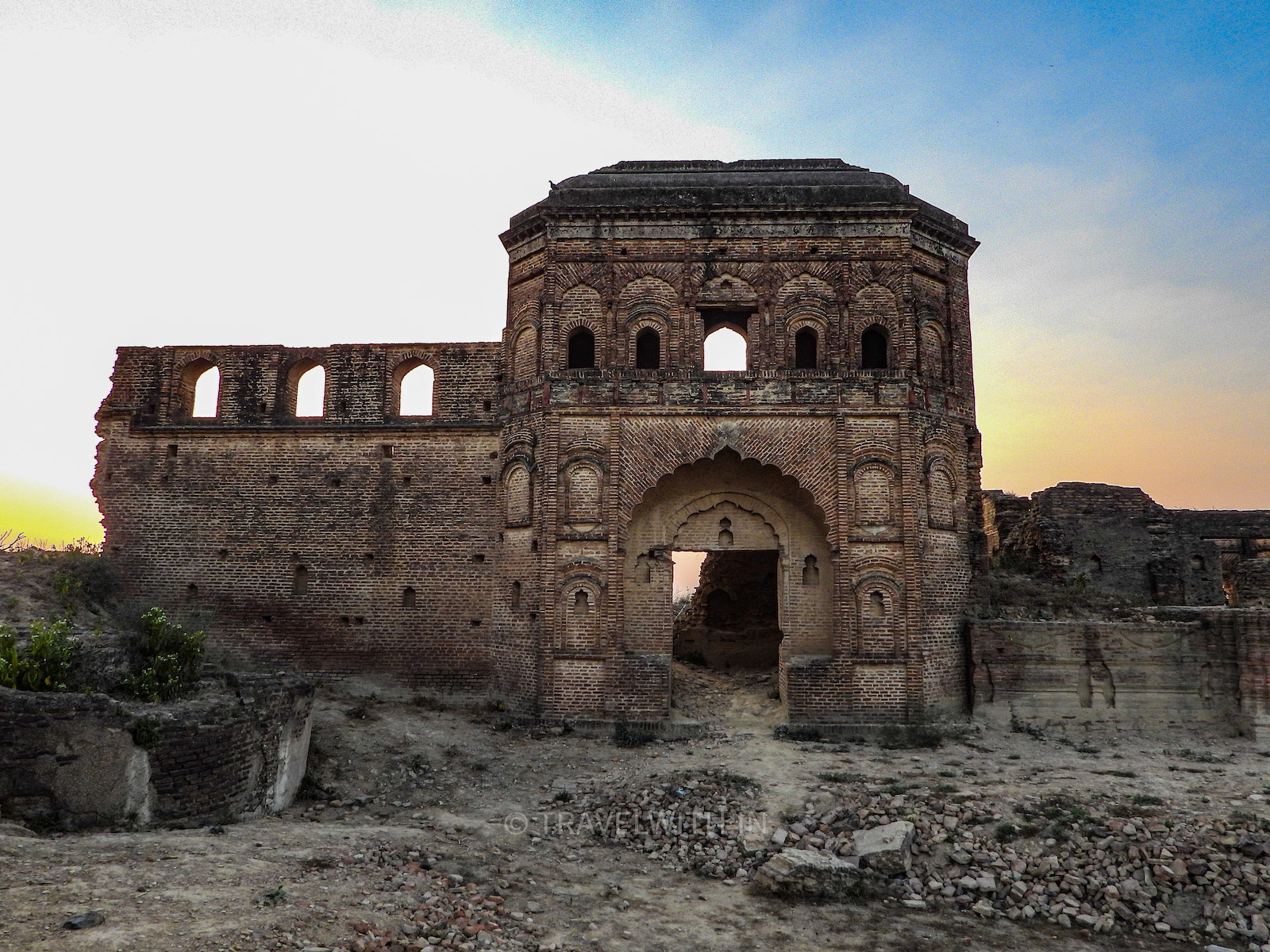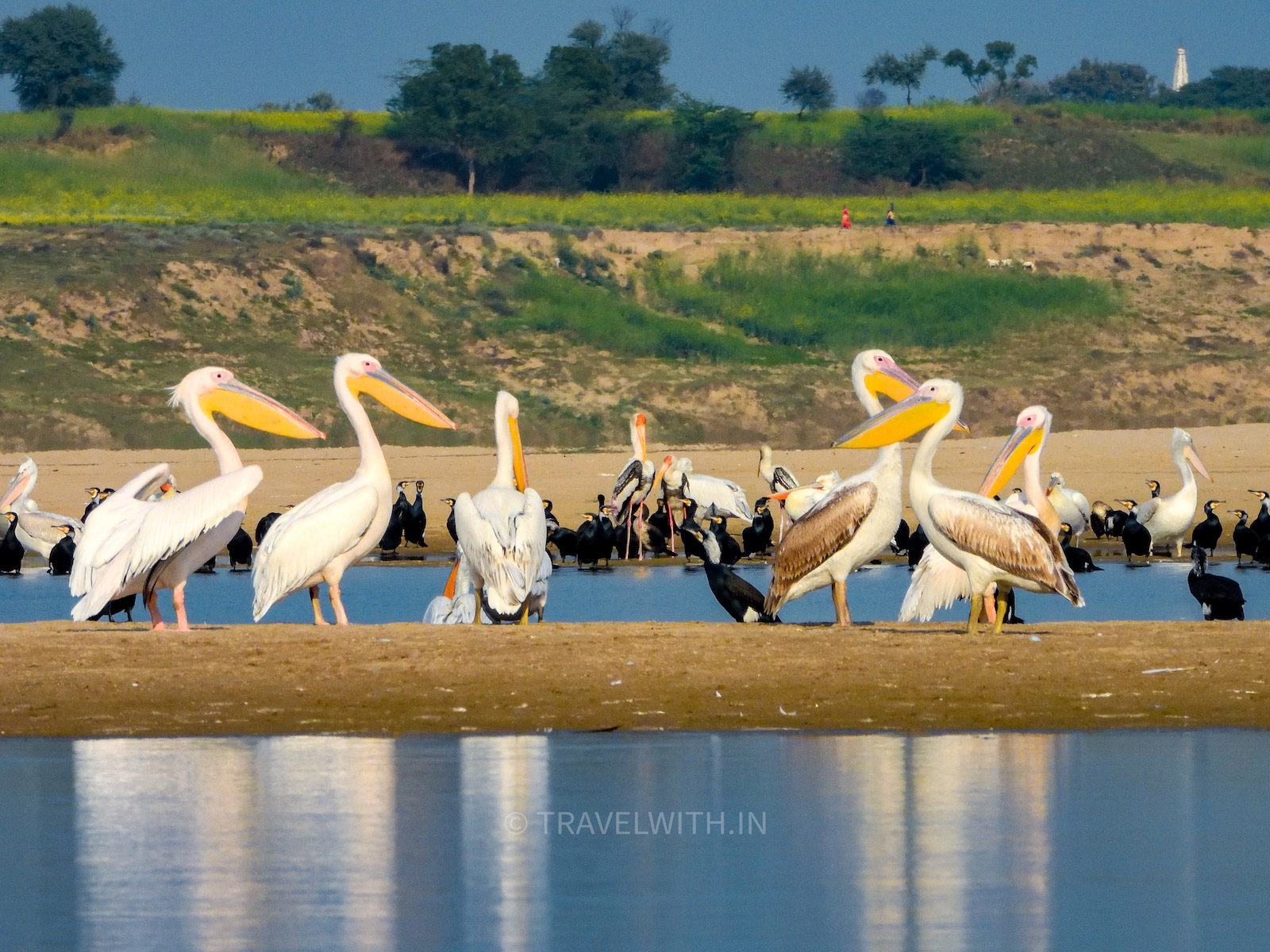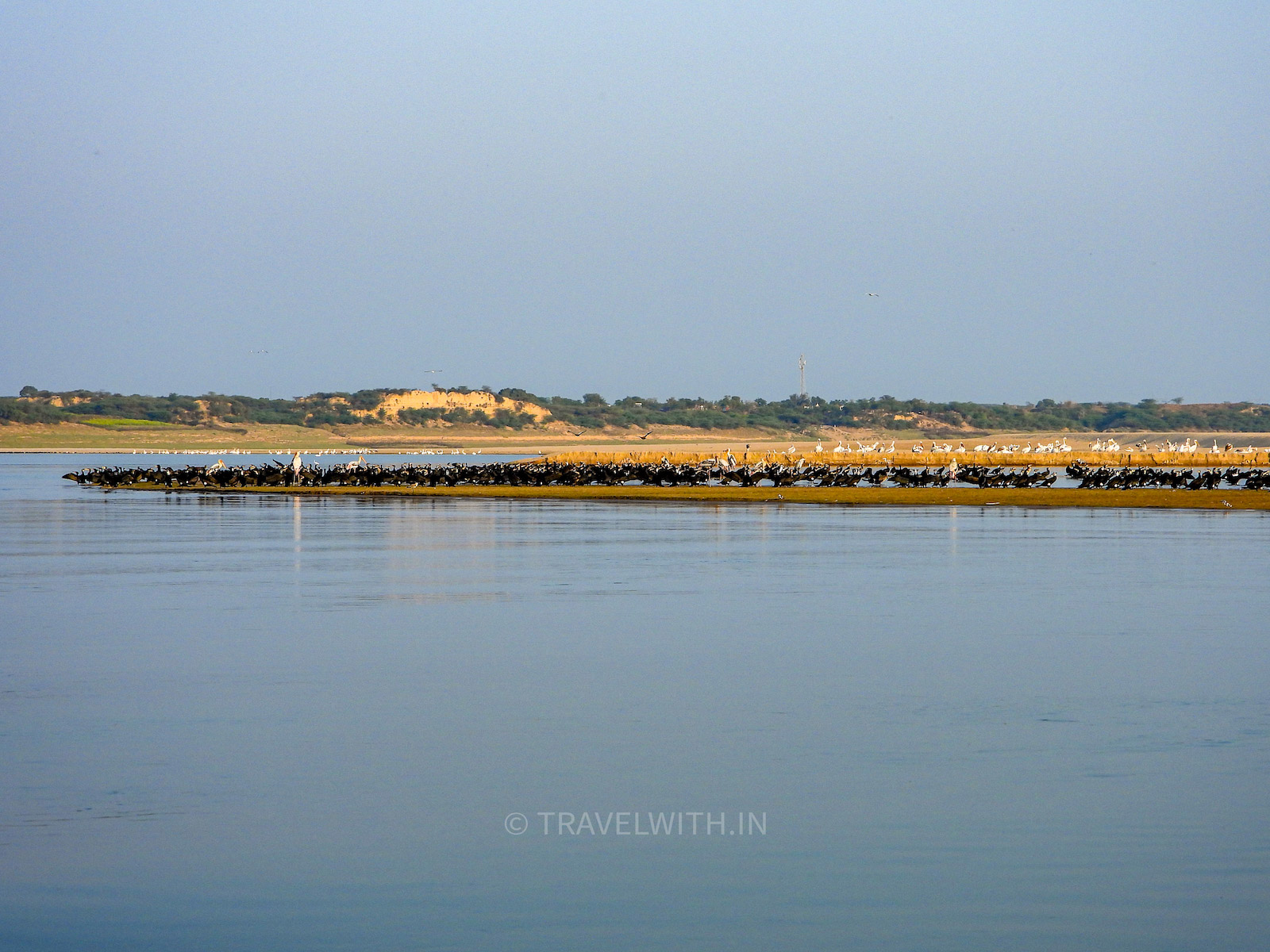When we talk of a confluence of two rivers in India (Sangam in Hindi) what comes first to most people’s mind is spirituality, crowds and the sound of temple bells. However, there is one such sangam (that involves a sacred river and a cursed river) where you will be surprised to see none of the above, well at least not on the scale that you see in Devprayag where the Alaknanda and Bhagirathi rivers merge or Prayagraj where the Yamuna merges in to the Ganga. No, I talk of the confluence of the Chambal with the Yamuna river in Bhareh, Etawah district, a remote part of Uttar Pradesh, a two hour drive from Agra.

Bhareh Fort and Shiva Temple from the confluence of Chambal and Yamuna
If you’ve read my other post on the Chambal River, you would know that the Chambal originates from the Vindhyan slopes in Indore district in Madhya Pradesh and flows through three states for approximately 1,000 KM before it merges with the Yamuna at Bhareh in Uttar Pradesh. Although a major perennial tributary of the Yamuna river, the Chambal is considered a cursed river in Hindu mythology. Besides being cursed, how can we forget, the region also made headlines till the turn of the millennium because of the famous dacoits (bandits) who called the River’s ravines, home.
Coming back to the confluence. On our multiple visits there, we were really happy to see that this sangam was quiet, clean and sans hordes of humans. The road to Bhareh from Agra is pretty good and the topography get’s very interesting towards the tail end of your journey – ravines on both sides of the road, dense forests and clear blue skies. On one of our drives to the confluence we saw a Jungle Cat crossing the road, marking his territory and least bothered with all the birds that were mobbing it.
Jungle Cat Marking his Territory

Bhareh fort in ruins
Bhareh is a small town rooted in history. The Bhareh Fort ruins can be seen as you approach the town. The Fort overlooks the confluence of the two rivers. We bet in it’s prime, the Fort was a fine specimen of architecture surrounded by dense ravines and forests. Today, it is not the same, Bhareh is surrounded on one side by agricultural fields and the other side luckily still retains it’s forest cover but mostly kikar or prosopis juliflora an invasive species introduced in India as a means to provide green cover in arid lands. The Fort on the other hand lies in ruins, the walls have crumbled over time after it was bombarded by the British during the First War of Independence (1857). Story goes that the Fort’s Rajput rulers fought against the British raj and the only way the British forces could take the Fort down was when they bombarded the massive walls with French cannons placed on merchant boats on the Yamuna and Chambal rivers.
The area was too quiet to be true. We asked a local farmer – “Where is everyone, where are the devotees?”. He said – “Let’s go to the river, we will find them there”. We started our walked down the Fort and past the Shiva temple and in to yellow mustard fields buzzing with bees until we finally reached the river bank, overlooking a beautiful sight, one that was faintly visible from the Fort unless you had a really good pair of binoculars. There were thousands of birds of all shapes and colors. Cormorants, Pelicans, Ducks, Storks, Gulls etc. congregating at the confluence as if doing their rituals just like us humans. It was also clearly evident which river was which – the polluted water of the poor Yamuna river (left) was brackish in color and smelled really bad compared with the greyish clean water of the Chambal (right) river. See the video below.

Great white and Dalmatian Pelicans at the confluence
Bhareh – Where the Chambal meets the Yamuna River
The boatman informed us that this year the number of birds is half of what they were in previous years. Imagine, the sight when they are here in their full strength! It could be mainly because many birds stopped at other wetlands and water bodies along their annual migratory routes. During the three years of Covid there was considerably less pollution and fishing in our rivers and fish may have been more abundant, so it could have been that some birds stayed on rather than continuing on to the end of their journey.
Regardless, it was a beautiful sight. How many sangams do you know of, where there are more birds than humans? We told ourselves, we have to visit Bhareh more often to see our feathered friends. Most of the migratory birds leave the confluence as it starts to become warmer in India for their homes in Ladakh, Central Asia, Europe and beyond. They come back each year in October and we are pretty sure we will be back to welcome them.

Thousands of migratory birds at the confluence of Chambal with the Yamuna river



0 Comments